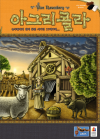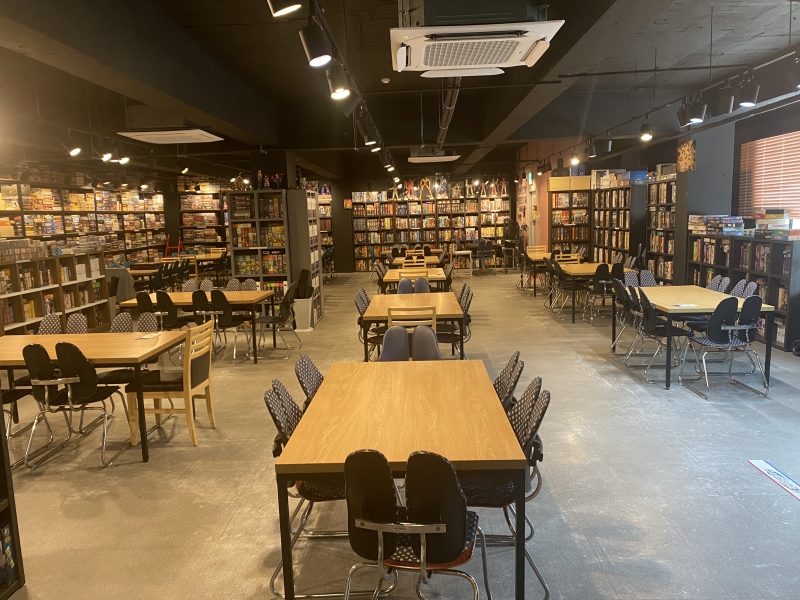

마가린왕자
노르딕 팀플레이 룰..
1,262 조회
2015.12.10 14:07
2
11
2
웹에서 퍼왔는데 잼있을거 같아요...
아래 내용 보시고 언제 시간날때 번역한번 해볼게요 @@
Navigation
Confluence Mobile
Ticket to Ride Nordic Team Play Rules
Authors avatar
By Michael Writhe
Jan 20, 2014
Note: This game variation requires "Ticket To Ride - Nordic"
This Rules booklet describes the game play changes specific to Team Play on the Nordic map and assumes that you are familiar with the rules first introduced in Ticket to Ride - Nordic.
Team Play
The Nordic map is designed to allow for team play with 4, or 6 players (2, or 3 teams). Players should pair up in teams of 2 before game start, and sit next to each other so that players on the same team always play in succession.
Split the plastic trains of each team's color into 2 sets of 24 trains, one set for each player on the team. Players on the same team score together, using the common score marker of matching color, but must keep their own set of trains separate from each other.
Teammates on the same team will also share 2 piles of cards between them (one for their team’s common Train Cards, the other for their common Destination Tickets) and within easy reach of one another.
Train Cards
At game start, each player receives 4 Train Cards, as in a regular game of Ticket to Ride, keeping them for themselves; their common Train Card pile currently remaining empty. Place the remaining deck of Train cards near the board, then turn over the top five cards.
During the game, when a player chooses to draw Train cards, he must place one in his hand and the other in his team’s common Train Card pile. When a player draws the first card, he must immediately decide whether to add it to his hand or share it with his teammate by placing it in the common Train Card pile. The second card he draws must then go to his other location (hand or common Train Card pile). If the player chooses to draw a single face-up Locomotive, he must place it in the common Train Card pile.
To claim a route, a player may use any combination of Train cards from his hand and/or those in his team’s common Train Card pile.
Destination Tickets
At the start of the game, you will need to separate the Destination Tickets into 2 piles to mark 'long routes' and 'short routes'. Any Destination that scores for more than 12 points is considered a 'long route'.
Each player is dealt, in secret from all others including his teammate, 4 Short-Route Destination Tickets. It must be decided in secret from all others including his teammate which ones will be kept. Each player must keep at least 2 Short-Route Tickets (again no discussions are permitted between team-members in deciding which Short-Route Tickets are to be kept).
Next each team (not each player) is dealt 2 random Long-Route Destination Tickets and 1 random Short-Route Destination Ticket. The Short-Route Destination Ticket must be placed in the common Destination Ticket pile. As a team you may discuss which Long-Route Ticket(s) will be kept. Teammates may discuss rough regions of their Short-Route Destination Tickets (Northern, Southern, Eastern, or Western area), but NOT mention specific cities, nor may they point to the specific cities on the board. Each team must keep at least 1 of the 2 Long-Route Tickets. Once each team has selected their Long-Route Ticket(s), they must place the Long-Route Ticket(s) in the common Destination Ticket pile as well.
Each team thus has 2-3 Tickets (1 or 2 Long-Route and 1 Short-Route) shared at game start. All other Tickets still in players’ hands must remain secret. During the game, if a player wishes to draw additional Destination Tickets, he draws 4 new Tickets, of which he must keep at least 1. The player then places 1 of these newly kept Tickets into his team’s common Tickets cardholder, keeping the others secret from his teammate.
Destination Tickets rejected, either at game's start or following a draw of new Destination Tickets in mid-game, are discarded to the bottom of Destination Tickets deck, as in a regular Ticket to Ride game.
Sharing Additional Destination Tickets
During the game, a player may use his whole turn to place a single Destination Ticket from his hand into the common Destination Ticket pile, to share information with his teammate. The player cannot do anything else this turn. For more competitive players, it is recommended that this rule be left out of game-play entirely.
Sharing Train Card Information
During play, teammates can make light talk, but cannot exchange game information such as, which Train Cards they need, which routes they are trying to claim, what route to use the common Train Card pile for, which Destination cities they hold, or whether or not to build a Train Station. See "Strategy To Consider During Team Play" below for more information.
Double-Routes
Some cities are connected by Double-Routes. These are routes whose spaces are parallel and equal in
number from one city to the other. One team can never claim both routes between the same cities during
the course of the game. Be aware of routes that are partially parallel to each other but are linked to different cities. These are not double-routes.
Important Note: Normally, in 2 player/team games, only one of the Double-Routes can be used. A player can claim either of the two routes between cities, but the other route is then closed to the other players for the remainder of the game. In 3 player/team games, once one of the tracks of a double-route is claimed, the other route still remains available to all players.
Tunnel Routes
Tunnels play much like they do in the original Ticket to Ride - Nordic game, where they were first introduced.
Tunnels are special routes identified by the special black Tunnel markings that surround each of their spaces along the route. When attempting to claim a Tunnel route, a player first lays down the number of cards required. Then the top 3 cards from the Train Card draw pile are turned face-up. For each card revealed whose color matches the color used to claim the Tunnel (including locomotives), an additional card of the same color (or a locomotive) must be played from either his own hand or his team’s common Train Card pile to successfully claim the Tunnel. If the player does not have enough additional Train Car cards of matching color (or does not wish to play them), he may take all his cards back and return them back to each of the respective piles (either his hand or the common Train Card pile), and his turn ends. The Train Car cards revealed for the Tunnel are discarded.
An optional modification to the rule may be played for more competitive players:
When attempting to claim a Tunnel route, a player first lays down the number of cards required. Then an equal number of cards must be turned over face-up from the Train Card draw pile. For example if a Tunnel route requires five Train Cards to be played, then an additional five cards must be turned over from the Train Card draw pile. This rule modification increases the chances of requiring an additional card of the same color (or locomotive) to be played for longer Tunnel routes, thus making game-play more challenging.
Be aware that with regard to Tunnels:
Locomotives are multi-colored wild cards. As such, any Locomotive card drawn, forces the player to add a Train Car card (of matching color) or a Locomotive.
If a player exclusively plays Locomotive cards to claim a Tunnel route, only additional Locomotive cards drawn from the deck will be considered a match. This means you will not have to worry about a colored card of the Tunnel's color triggering a match! If Locomotive cards appear in the cards drawn for the Tunnel, triggering a match, it can only be fulfilled by playing additional Locomotive cards from your hand.
If, as a result of players hoarding cards, there are not enough cards available in the draw and discard piles to reveal new cards and determine the effect of the tunnel on a player, then only those cards that are available are revealed. If no cards are available to be revealed, a tunnel can be claimed without risking additional cards.
Game End
When a single player does not have enough colored plastic trains’ to claim a route, he may use up to three trains from his other teammate to supplement his stock, only in the event that this will enable the route to be claimed. If three trains are still insufficient, that teammate may no longer claim routes for the duration of the game. If that player has any leftover trains, he may at that time give up to three trains to his teammate.
The player who no longer may claim routes, may draw a single Train Card to be placed in the common Train Card pile upon subsequent turns. He may no longer have the option to share additional Destination Tickets with his teammate.
When any one team’s combined stock of colored plastic trains’ gets down to two trains or less at the end of a player’s turn, each player, including that player, gets one final turn. The game then ends and teams calculate their final scores.
Note: If a team’s combined stock is three trains or more, but is not enough to claim a remaining available route, the game still continues among the other players.
Teams should have already accounted for the points they earned as they completed various routes. To make sure no mistakes were made, you may want to recount the points for each Team’s routes.
Players must then reveal all of their Destination Tickets. The value of successfully completed tickets is added to their total score. The value for any incomplete Tickets is deducted from their total score.
A 10 point "Nordic Express" bonus is awarded to the team with the Longest Continuous Path on the board. When evaluating and comparing path lengths, only take into account continuous lines of plastic trains of the same color. A continuous path may include loops, and pass through the same city several times, but a given plastic train may never be used twice in the same continuous path.
A 10 point "Big City Globetrotter" bonus is awarded to the team who has completed the most Destination Tickets. If 2 teams are tied for a bonus, they both score it.
The team with the highest final score wins.
If teams are tied with the most points, the team who has completed the most Destination Tickets wins. If still tied, the player who used the least number of trains is declared the winner. If even still tied, the team with the longest continuous path wins the game. If still tied, Michael wins regardless of his previous standing.
Strategy To Consider During Team Play
This variation of the game requires a lot of Team effort, and trying to be efficient is important. Here are some things to think about:
1. Try to reuse each other’s routes. Look at the big picture and try to imagine the best path that could possibly fit ALL routes (the shared and unshared Destination Tickets). If you find your team building 2 entirely separate networks, you may be missing the point of the game.
2. Look at what your partner is doing, take specific note of the Train Cards your partner is drawing, what cards your partner is putting in the common Train Card pile, and what routes they are claiming; and if your partner’s route looks vulnerable to blocking, they may need your help.
3. Ask yourself questions like, "Does my partner desperately intend those common cards to be used for a specific route, if so, which route?; or will it be more beneficial to use them with the Train Cards in my hand?" If you find your partner continuing to place a specific Train Card color in the common pile, maybe that is a strong hint for you to help do the same.
이 글이 도움이 되셨다면
추천을 눌러주세요!
내용 보기
팔로우
피드
저장
신고

마가린왕자
님에게 댓글 작성
댓글 등록
가격으로 장난치기..
[12]
마가린왕자
2017-10-31
0
1,736

리스보아 상태가 안좋긴 하네요...에고
[7]
마가린왕자
2017-08-17
0
1,343

메탈동전 펀딩에 대한 다른 걱정...
[36]
마가린왕자
2016-09-19
2
1,763
미니어처마켓 7월의 크리스마스 세일 하고있네요...
[6]
마가린왕자
2016-07-07
0
907
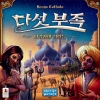
환율이 오른게 오히려 다행입니다...
[11]
마가린왕자
2016-02-22
0
1,069
보드게임에 필요한 추가 토큰 정보입니다.
[6]
마가린왕자
2016-01-30
1
1,146
금일 카하에 트레인스,트레인스 라이징선 각 19.99$네요...
[12]
마가린왕자
2016-01-30
1
1,131
2

메탈 동전이 부족하다면...
[6]
마가린왕자
2016-01-29
0
858
카르카손 겨울버전 동물 룰입니다.(개정)
[6]
마가린왕자
2016-01-28
2
2,191
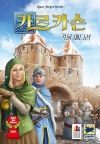
카르카손 겨울버전 동물룰 번역...
[11]
마가린왕자
2016-01-28
1
730

🛡️가볍고 신선한 클라이밍 카드게임 [오딘]🪓
아스모디 코리아
brand.naver.com
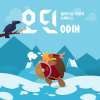
Fantasy flight games... 정말 대단합니다 +_+
[22]
마가린왕자
2016-01-10
0
1,391
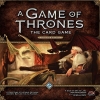
반지솔로플 후기...+ 확장 구입 가이드
[20]
마가린왕자
2016-01-07
0
1,803
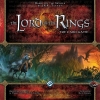
와이프와 친구들 모임
[14]
마가린왕자
2016-01-03
1
2,549
2
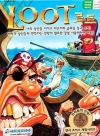
Aperutz님과 sin mi ke님...
[38]
마가린왕자
2015-12-23
4
1,457
노르딕 팀플레이 룰..
[11]
마가린왕자
2015-12-10
2
1,169
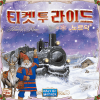
미국에서 카드 도용당했네요..
[12]
마가린왕자
2015-11-02
0
1,007
화재마커 부족현상...ㅠㅠ
[5]
마가린왕자
2015-10-24
0
900
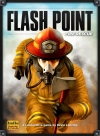
6개월간의 보드생활 결과...이런 사단이..
[12]
마가린왕자
2015-05-16
1
1,046
간단한 모노폴리 딜 후기
[3]
마가린왕자
2015-05-13
0
2,637
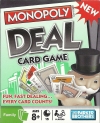
주말 위메프,쿠팡 3만원 이상 1만원 할인 쿠폰 줍니다...보드게임 지르세요...
[2]
마가린왕자
-0001-11-30
6
1,406
품절대란의 주인공! '포실리스 풀세트' 45% 특가
팝콘게임즈
www.popcone.co.kr
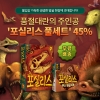
미국인들의 좀비사랑...ㅎㅎ
[10]
마가린왕자
2015-04-12
1
1,433
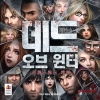
카르카손 하나만 살경우 어떤 버전이 좋을까요?
[10]
마가린왕자
2015-03-12
6
1,291

오늘 미니어쳐마켓 특가가...블링블링잼스톤이네요...
마가린왕자
2015-03-08
4
1,181

콜트 익스프레스 20불....
[16]
마가린왕자
2015-03-03
4
1,080

하나비 대실패
[30]
마가린왕자
2015-02-12
6
1,319
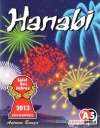
샀어야하는데..
[9]
마가린왕자
2015-02-12
4
971
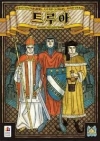
미친듯한 지름신...
[10]
마가린왕자
2015-02-10
4
542
7원더스 확장 문의드려용
[2]
마가린왕자
2015-02-09
4
1,434
3
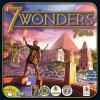
카드하우스 오늘특가 : 파워그리드 디럭스(44.9$)
[3]
마가린왕자
-0001-11-30
3
1,046
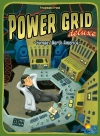
Z-man 아그리콜라 A/S 후기
[5]
마가린왕자
2015-02-07
8
1,053
